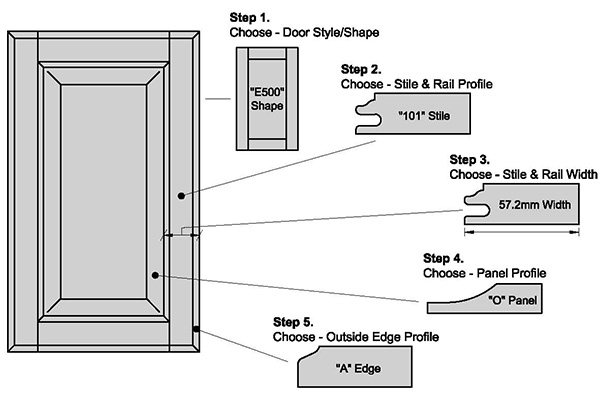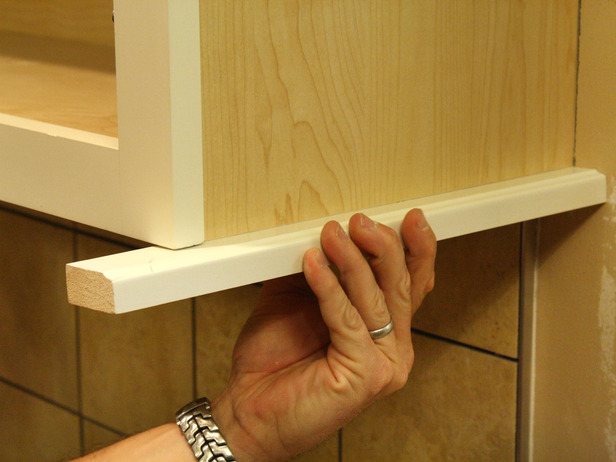

The insert the two rails into the groove of one of the stiles. To help minimize this, make slow passes (but not too slow that you burn the wood) and make sure to have a solid scrap plywood square behind it.Īpply a thin layer of wood glue to the entire mating surface of the tongues. Tips: Cutting the tongues can create tear-out at the end of a cut. Once you are happy with the cut, proceed to cut the tongues on all the rails. (I know because I’ve done it… Several times.)Ĭut a tongue on a test piece and check the fit to make sure the height of the bit is correct. This is an easy thing to overlook and routing the tongue upside down will result in having to remake the piece. Note: The front face of the board (decorative edge) should be down. To make sure these are routed safely you can use a rail coping sled or a scrap square of plywood and a Microjig to make sure the rail stays perpendicular to the fence as it is fed through the router. Then align the collar with the fence as we did in the previous step.Ĭutting the tongues can be a little bit more dangerous than cutting the grooves since the piece has to be fed through the router perpendicular to the fence. Replace the groove profile bit with the tongue profile.Īlign the bit as best you can with the groove on a piece you have already cut. Make sure to keep note of what goes where and mark the rails to make it easier on yourself. Now you can cut those rails to length on the miter saw. These widths will vary, so make sure to measure for each drawer front and try to keep your accuracy with a 1/16″. Then subtract this amount from the overall width you measure earlier to get the length of the rails. By taking two stiles and turning the flat sides in, you can then measure from the inside of one groove to the inside of the other (I came up with 4-1/4″).

Now that we know the width of the face we need to subtract the stiles. With our 1/8″ gap marked on the center of the drawer dividers we were then able to measure the drawer front width. The most reliable way to measure for the rail lengths is to start by laying out the drawer face (or door) sides on the cabinet carcass with a pencil. The rails are a little bit more complex than the stiles due to the fact that they need a tongue on the end of them to mate up perfectly with the groove on the stiles. If you have a lot of the same height fronts, a stop block like I have above will help you make quick and consistent cuts. And when there is no adjacent surfaces (end of cabinet), the door drawer front is flush with the end. This means that there will only be 1/8″ gap between the door and any adjacent doors or surfaces. The length of the stiles is equal to the overall height of the drawer front or door. Once you are happy with the placement, all of the 1×3 stock can be routed with the groove profile. Or the same can be down with a Microjig or two.Īfter running the test piece through the router, check the profile to make sure it is what you were aiming for. When cutting a profile on the router table you should always go from right to left and apply consistent pressure in the following three directions:ġ and 2 can be done safely with the use of featherboards on both sides of the router while 3 is done with your hands feeding the stock through. You can do so with a straight edge, making sure that it is flush with both sides of the fence and the collar barely spins when the straight edge is moved from side to side. Once the vertical alignment is set up, then align the fence with the steel collar. Mount the groove profile router bit and raise/lower it to align with your markings.

The Kreg Multi-Mark is the perfect tool for this. So that is how it should be laid out on the edge of a scrap 3/4″ board to test. Therefore, we are going to slide this groove toward the back of the door by 1/6″ giving us the following: 3/16″ back lip, 1/4″ groove and 5/16″ decorative front. However, you should know that 1/4″ plywood is not truly 1/4″ thick it is actually 1/32″ less thick, and when you multiply that by two, you get 1/16″ less than the expected 1/2″. We can fix this problem by adding scrap 1/4″ plywood behind it. So you would have 1/4″ lip on the back, 1/4″ groove for the panel and 1/4″ decorative edge on the front.įor a drawer front we will need to fill the void behind the panel, otherwise, when the drawer pull is installed, it would cause the panel to get sucked in. Typically, the groove in a cabinet door is in the middle. To get started we need to figure out the height of the 1/4″ groove. They just get a groove cut on the inside and in this tutorial we are going to do it with a router table and a set of rail and stile router bits.


 0 kommentar(er)
0 kommentar(er)
